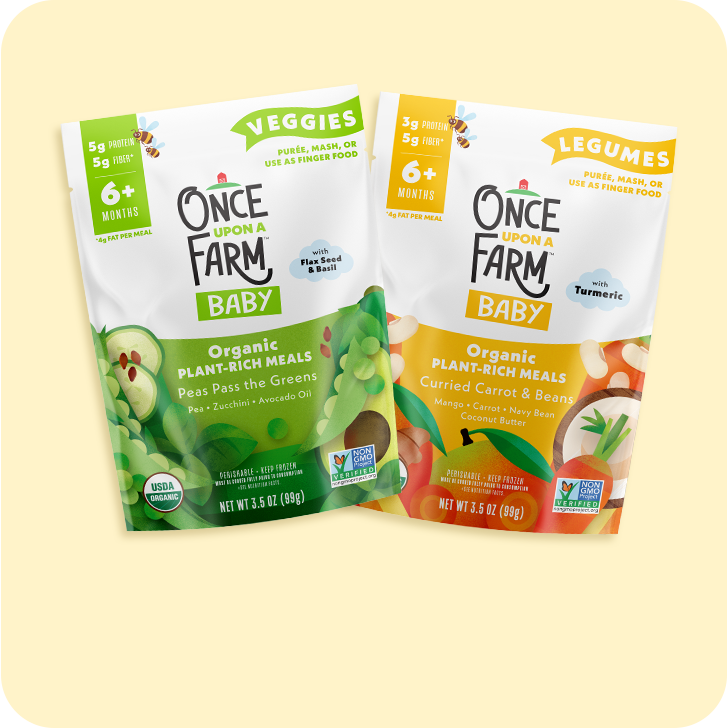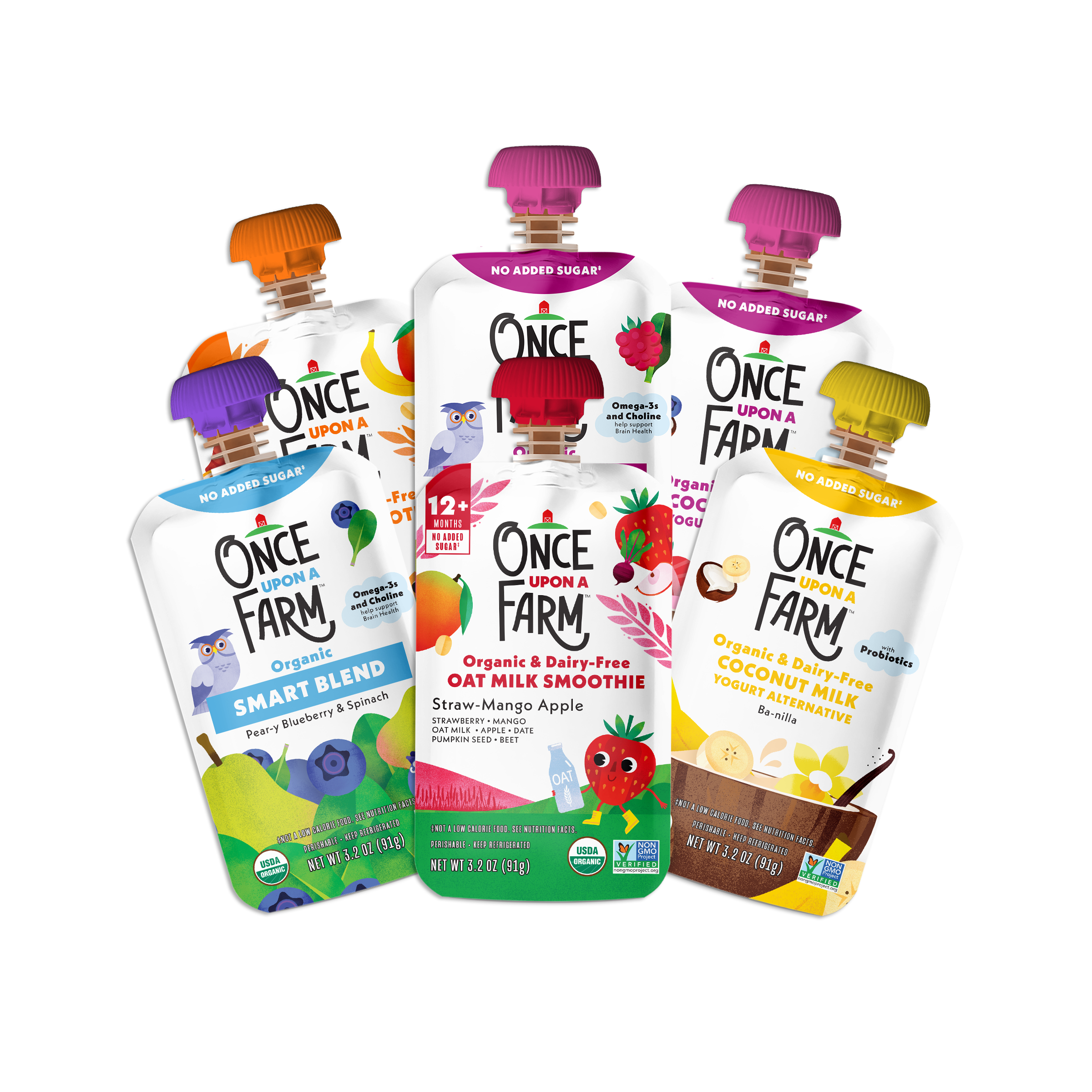You’re at the kitchen table with your kiddo, and a full plate of their favorite foods sits untouched in front of them. You have zero idea what’s changed and why, but nothing you do to convince your child to eat seems to be working. Fortunately, there are reasons for sudden taste preferences that can help you feel a little less frustrated at dinnertime.
Let’s Talk Taste Buds
You know taste buds, those tiny bumps on your tongue. As O’Farm expert and Board-certified pediatrician Joana Fraser, MD explains, “They are filled with thousands of nerve endings that detect different chemicals, and send messages to your brain about how things taste.”
How Often Do They Change?
At birth, we have about 30,000 taste buds, but by adulthood, this number decreases to around 10,000. “Every 2 weeks your taste buds regenerate,” Dr. Fraser shares, “but this does not mean that they change, just that new cells replace the old cells.”
One’s genetics can influence how we perceive flavors. Pediatric Registered Dietitian Nutritionist Kacie Barnes, MCN, RDN, LD says, “Some people have more taste buds than others, and they are called supertasters. Supertasters tend to be more selective because food flavors are stronger to them than others.”
Other Factors That Can Influence Taste
Our other senses—smell, sight, touch, and hearing—can also impact how we taste foods. Additionally, certain medications can alter our sense of taste, Dr. Fraser explains. “The one that is most likely to be used in children [is] amoxicillin.” A stuffy nose can affect our sense of smell, which can decrease our sense of taste. “Different people can have different sensitivities to different types of taste,” Dr. Fraser adds. This can affect food preferences. “Interestingly, there is a greater genetic difference in the perception of bitter foods than there is for sweet foods, which likely helps to account for the fact that some people just will never enjoy bitter foods as much as others.” This difference tends to become less pronounced during adolescence, indicating another way that tastes and food preferences can change over time. So, maybe your little one will end up loving vegetables… maybe.
Why Your Kid (Probably) Prefers Sweet Tastes
This won’t surprise most parents, but “Babies have an innate preference for sweet tastes.” Barnes tells us. “Research shows that both babies and children prefer higher levels of sweetness than adults.” This has an evolutionary explanation, Dr. Fraser adds. “Sweet signals high-calorie foods necessary for growth and survival whereas bitter/sour often signifies spoiled or poisonous foods.” Children can actually tolerate a higher level of sweetness than adults.
The rejection of bitter flavors typically lasts through childhood with the preference for a heightened level of sweetness decreasing in adulthood. “The reason for this change is still not entirely understood,” Dr. Fraser explains, “but one reason may be that the decline is related to the cessation of physical growth.”
What Else Can Impact Taste Preference?
The temperature of a food also impacts the taste, Barnes shares. “Cold (and especially frozen) foods taste less flavorful than hot foods. This can be a benefit when you have a picky eater as they may be more likely to try something cold or frozen when it has less of a taste and aroma.”
What Is Food Neophobia?
Food neophobia is an unwillingness to eat new foods. Sound familiar? “It’s common for toddlers to experience food neophobia when they transition to eating more adult food,” Barnes assures us. Some children experience higher levels of this than others. “It’s usually around age two when parents start to notice their child rejecting foods they previously liked, or refusing new foods.” But it can happen before or after age two.
How to Tackle Tricky Taste Preferences (AKA Picky Eating)
“While they are born with a preference for sweets,” Barnes says, “repeated exposure to new or disliked foods can promote acceptance.” Some tips:
1. Start Small, Go Slow
Barnes recommends introducing new foods and flavors in small increments. “For kids who are averse to trying new foods, they do best when you introduce new foods very slowly.” If you have a toddler who likes pasta plain with butter (NO TOMATO SAUCE!), Barnes says you could stir in a ¼ teaspoon of tomato sauce. “Make the flavor change very subtle and mild so they can grow accustomed to it. You can increase slowly over time as they adapt.”
2. Mask New/Less Desirable Flavors
You can also use favorite flavors to help mask new or less desirable ones, Barnes suggests. “If they love ketchup, I would serve it with new foods to encourage them to try it with the familiar and predictable flavor on it.”
3. Model Behavior
Taste preferences can also be influenced by us as parents and caregivers. As Dr. Fraser explains, “If we model eating a wholesome, varied diet without pressure, I truly believe that is the best way to set our children up for success when it comes to a lifetime of balanced and healthy food choices.”
4. Don’t Label Your Child
“Be mindful of how you talk about food,” Dr. Fraser reminds us. Our kids are always listening. ‘Try to avoid labeling foods as “good” or “bad”, or saying things like, “She just HATES broccoli”.’ These labels and ideas can become imprinted on their little minds, which can be hard for them to unlearn.
5. Don’t Pressure Them
“While pressuring kids to eat something new may work in the moment,” Barnes says, “it doesn’t make them become more adventurous and open to trying new things.” She suggests avoiding pressuring your child, but instead giving them time to explore food without the pressure to eat it.
With so many factors influencing taste, food preferences, and picky eating, it’s all the more reason to be patient with your kiddo (and yourself) as you navigate the messy world of feeding kids. You’ve got this.





















